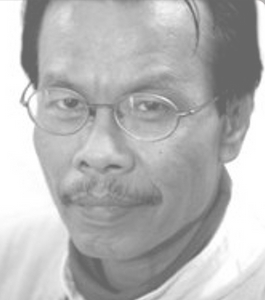
Sai Htee Sai (1946–2022)
Early Life
Sai Htee Sai, also known by the affectionate name Sai Htee Dai, was born in Shan State in 1946. Growing up in an ethnically diverse and culturally rich region, he was exposed early to traditional Shan music and poetry. His childhood coincided with a period of national transformation in Myanmar, when political instability, cultural transitions, and ethnic identities were being negotiated across society. Within this environment, he developed an early affinity for singing and storytelling, which later formed the foundation of his artistic career. His background in Shan traditions shaped his musical sensibility and influenced him even after he entered the national stage.
Rise to Fame
Sai Htee Sai began his public musical journey in the 1960s, a formative era for modern Burmese music. At the time, Western-influenced popular songs were becoming more widespread, but there was also a strong preference for Burmese classical tonal structures and lyrical themes. Rather than assimilate completely into a mainstream style, he preserved elements of Shan melody and emotion in his compositions. This set him apart from many of his contemporaries. His voice carried both gentleness and conviction, and his lyrics resonated deeply with listeners.
As his songs gained national recognition, he became a familiar name among Burmese radio listeners, vinyl collectors, and audience members at live performances. His popularity continued through the 1970s and beyond with works such as “Chit Thu Yway Mal” (“Am I Still Your Lover?”) and “A Kyaung Pyaing Yae” (“School Days”), which became staples in the cultural memory of Myanmar. His rise to fame was not manufactured by heavy promotion or spectacle; instead, it emerged from a consistent and sincere artistic practice that resonated across linguistic and cultural barriers.
Influence on Shan Identity and Cultural Unity
A major part of Sai Htee Sai’s legacy lies in his contribution to ethnic representation through music. As an ethnic Shan artist achieving admiration from Burmese-speaking audiences nationwide, he became a cultural bridge between communities often separated by politics, language, and history. Instead of using activism or public rhetoric, his music served as a soft instrument of unity.
His presence in popular media signaled that Shan identity belonged within the national cultural landscape, not outside it. For Shan audiences, he embodied pride and validation. For others across Myanmar, his work offered a gentle introduction to the emotional and aesthetic character of Shan expression. In a country long affected by ethnic conflict and fragile national cohesion, Sai Htee Sai’s artistry demonstrated that cultural diversity could be shared peacefully through song.
Music Style and Lyrical Themes
Sai Htee Sai’s music is widely remembered for its emotional clarity and lyrical integrity. He preferred simple, unembellished musical arrangements that placed emphasis on storytelling and vocal expression. The central themes of his songs often dealt with love, longing, memory, youth, distance, and emotional loss. Many of his works evoke nostalgia for an earlier, slower Myanmar — before urbanization and mass media reshaped lifestyles and values.
Even when he sang about personal sorrow or unfulfilled affection, the tone remained dignified rather than theatrical. His delivery suggested quiet reflection instead of dramatic performance. Unlike artists who adapted their music primarily to market demand, Sai Htee Sai retained a consistent poetic approach rooted in sincerity. This stylistic consistency contributed to the longevity of his work and its ability to appeal across generations.
Legacy and Impact on Younger Generations
Sai Htee Sai’s influence continued long after his most active years. Younger musicians in Myanmar have cited him not only as a vocal model but also as an ethical model within the industry. His career demonstrated that one could remain faithful to artistic identity without sacrificing broader reach. Many newer artists reinterpreted his songs in covers, tribute concerts, and online recordings, ensuring continued relevance of his music in a digital era.
His songs became part of the emotional soundtrack of Myanmar life — played at family gatherings, broadcast on radio, remembered in personal stories, and sung by people who were not even born during his rise to fame. This transmission across time helped establish him not merely as a singer but as a cultural figure woven into public memory.
Critical Reception and Public Admiration
Critics and audiences alike regarded Sai Htee Sai with respect, not only for his musical output but also for the manner in which he navigated a long public career without scandal or controversy. In a music industry that can reward spectacle, he maintained a reputation for humility and discipline. Cultural commentators often highlighted his work as an example of how music can exert social influence without political conflict or commercial exploitation.
His ability to communicate universal emotions while preserving ethnic nuance earned him admiration from people of different backgrounds. Unlike some artists whose fame diminishes after their era, Sai Htee Sai’s reputation remained intact, strengthened further by the continued circulation of his works.
Death and Public Mourning in 2022
Sai Htee Sai passed away in 2022, marking the end of an era in Myanmar’s modern music history. His death generated widespread expressions of grief from fans, musicians, cultural organizations, and members of the diaspora. The mourning that followed reflected not only sadness over the loss of a beloved artist but also recognition that a living link to Myanmar’s musical past had been severed.
Public tributes emphasized that his contributions were not replaceable. Many wrote that his songs had accompanied them through life — through childhood, migration, marriage, separation, and aging. The emotional response to his passing illustrated the depth of his presence in Myanmar’s collective memory.
Enduring Cultural Importance
Even after his death, Sai Htee Sai’s music continues to circulate across platforms and generations. His legacy persists in how Myanmar understands itself culturally: through blended identities, emotional expression without conflict, and the possibility that art can unify rather than divide. He remains a symbol of how one voice, rooted in honesty and grounded in ethnic heritage, can speak to an entire nation without losing its origins.
FAQ — Sai Htee Sai
Who is Sai Htee Sai?
Sai Htee Sai was a legendary Shan and Burmese singer known for his melancholic voice, poetic lyrics, and major influence on modern Myanmar music.
What is Sai Htee Sai famous for?
He is famous for his emotional love songs and cultural songs that reflected Shan identity, social life, and personal longing. Many of his songs remain classics in Myanmar.
What genre of music did Sai Htee Sai sing?
He mainly performed Burmese pop, Shan traditional-influenced ballads, and slow romantic songs with deep lyrical meaning.
Which era was Sai Htee Sai most active in?
His peak fame was between the 1970s and 1990s, when his songs were widely broadcast and performed across Myanmar.
Is Sai Htee Sai still alive?
No. Sai Htee Sai passed away, but his songs continue to be celebrated and covered by newer generations of artists in Myanmar.
Why is Sai Htee Sai considered a legend?
Because his voice, emotional expression, and lyrical quality influenced decades of Burmese singers and created a timeless legacy in Myanmar music history.
Where can I listen to Sai Htee Sai’s music today?
His songs are available on YouTube, Burmese MP3 archives, and streaming channels dedicated to classic Myanmar music.






